Search Results
Fine Jewelry University Articles matching: “diamond color”
Showing only FJU Article results. Click here to show all results.
Fine Jewelry University (Show All FJU Articles)
-
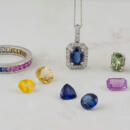
Gem in the Spotlight: Sapphire
… contains several sapphires. One of them, the Saint Edward’s Sapphire, is a large sapphire set in the center of a diamond cross on top of the British Imperial Crown. According to legend, Edward the Confessor, King of the Anglo-Saxons from …, green, orange, and golden yellow are magnificent in any jewelry. See More on Etsy › With the exception of the diamond, which measures 10 on the Mohs scale, sapphire and ruby (9 on the Mohs scale) are the toughest and most durable gemstones…
-
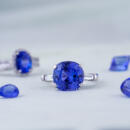
Gem in the Spotlight: Tanzanite
… traits in a gemstone. Tanzanite has them both. In fact, it is estimated that Tanzanite is 1,000 times rarer than diamond. But, what makes Tanzanite so popular is its color. Tanzanite’s gorgeous color is a captivating mix of blue and purple…. The Queen of Kilimanjaro tiara contains the largest faceted tanzanite in the world. The tiara also contains 913 diamonds and 803 tsavorite garnets all set in 18 karat white gold. It is owned by former Apple CEO Michael Scott who routinely …
-
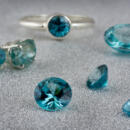
Gem in the Spotlight: Blue Zircon
… of zircon creates one of the liveliest displays found in any colored gem. In fact, before any of the manmade diamond simulates were made, the colorless version of zircon was used in jewelry to mimic diamond. Why? Natural zircon is known for…, brown, or red variety of Zircon. Jargon is the colorless, pale gray, or pale yellow variety of Zircon. Matura Diamond is another trade name for colorless Zircon. Starlite is the name for the blue gem variety of Zircon. The color of …
-
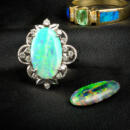
Gem in the Spotlight: Opal
… commonly used in jewelry. For reference, here are the Mohs hardness values for some other gemstones you may know: Diamond 10, Sapphire 9, Amethyst 7, and Peridot 6. Turquoise is about as hard as opal, but you would need to consider Pearl or…described as containing the wonders of the skies, sparkling rainbows, fireworks, and lightning. Its dazzling play of color is totally unique in the gem world, and the lore that surrounds it is almost as colorful as the gem itself. Opal is …
-

How Are Lab Grown Diamonds Made?
The dream of making a beautiful and valuable diamond from simple carbon has long captivated the imagination of scientists and visionaries alike. Just like the alchemists…, many have tried to achieve this impressive feat. We have only recently been able to produce gem quality, lab grown diamonds that are large enough to be used in jewelry. But, how is it done? Early Efforts Throughout history, many people …. Henri Moissan was one of the early pioneers in the field. In 1893, he claimed to have successfully made a diamond by heating charcoal to 3,500 degrees Celsius inside a carbon crucible. Many attempts were made to reproduce his techniques …
-
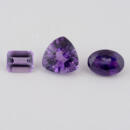
Gem in the Spotlight: Amethyst
…so keep that in mind when storing your amethyst jewelry. If you have an amethyst ring or other piece of jewelry with diamonds or other gemstones, you should be careful when cleaning it. You should use a soft brush to gently scrub the …Amethyst is known for its beautiful purple color, and it is the most important quartz variety used in jewelry. Purple has long been considered a royal color, so it … that amethyst has been in so much demand throughout history. Gemology Amethyst is a variety of quartz that is colored by the presence iron and aluminum. The violet color of amethyst can range from a pale lavender to a deep, dark purple, …
-
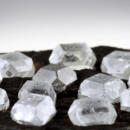
Is a Lab Grown Diamond Right for Me?
Picking a diamond for your engagement ring is a big decision. For most of us, buying a diamond is a significant financial undertaking… don’t have (anyone remember their refractive indexes from high school physics?). Even more unfortunately, the diamond industry suffers from a lot of misinformation and paranoia both from inside the trade and from outside observers. I have … conflict diamonds (both wild falsehoods). On the other hand, I have heard some in the industry refer to lab grown diamonds as fakes (also completely false). We’re here to help cut through some of the rhetoric, so you can make an informed …
-
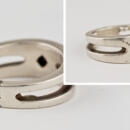
Jewelry Solder: What You Should Know
…, and so on. Each of these other metals contributes some of their unique properties of the final alloy changing its color, hardness, flexibility, and more. That’s great, but what does this have to do with solder? With solder a different … to the finished metal. One of the reasons why we all love gold is that it is so resistant to tarnishing or discoloring over time. Tarnishing, also called oxidization, is a result of chemical reactions between the metal and elements in the…
-
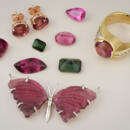
Gem in the Spotlight: Tourmaline
… the best kept secret of gem collectors and connoisseurs who appreciate its unique properties and stunning array of colors. In fact, tourmaline is found in almost any color you can imagine, and people have most likely used and appreciated … makes it softer than topaz or sapphire and harder than tanzanite or opal. Tourmaline is found in a huge variety of colors (sometimes even within the same gem), and some of these colors have their own names: Rubellite: is red, pinkish red…